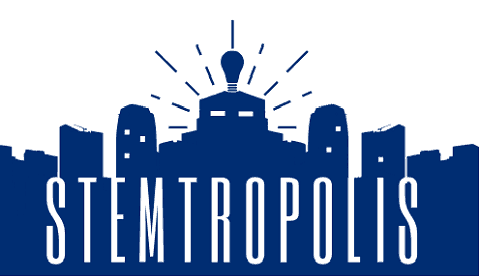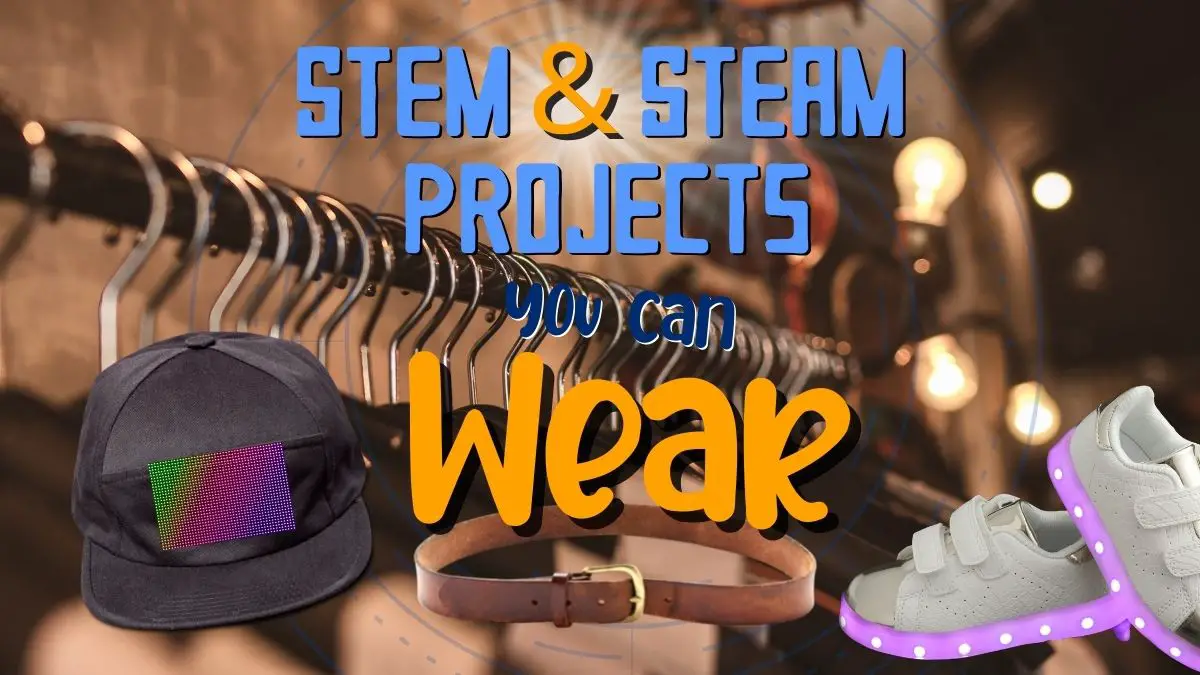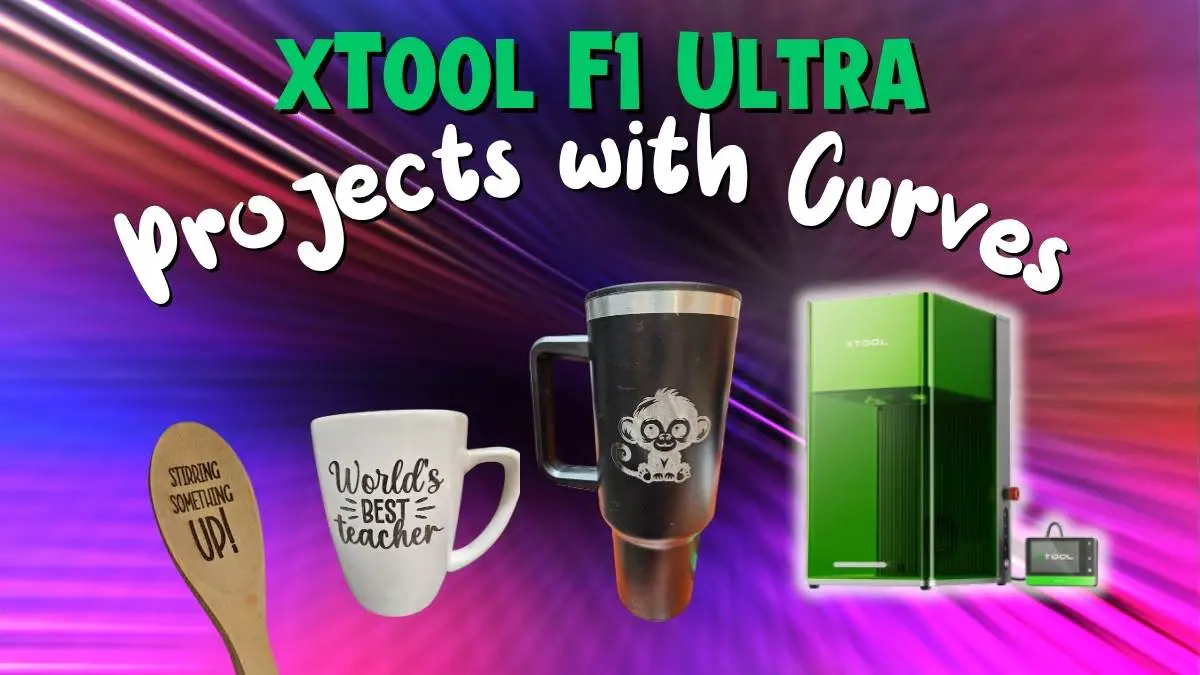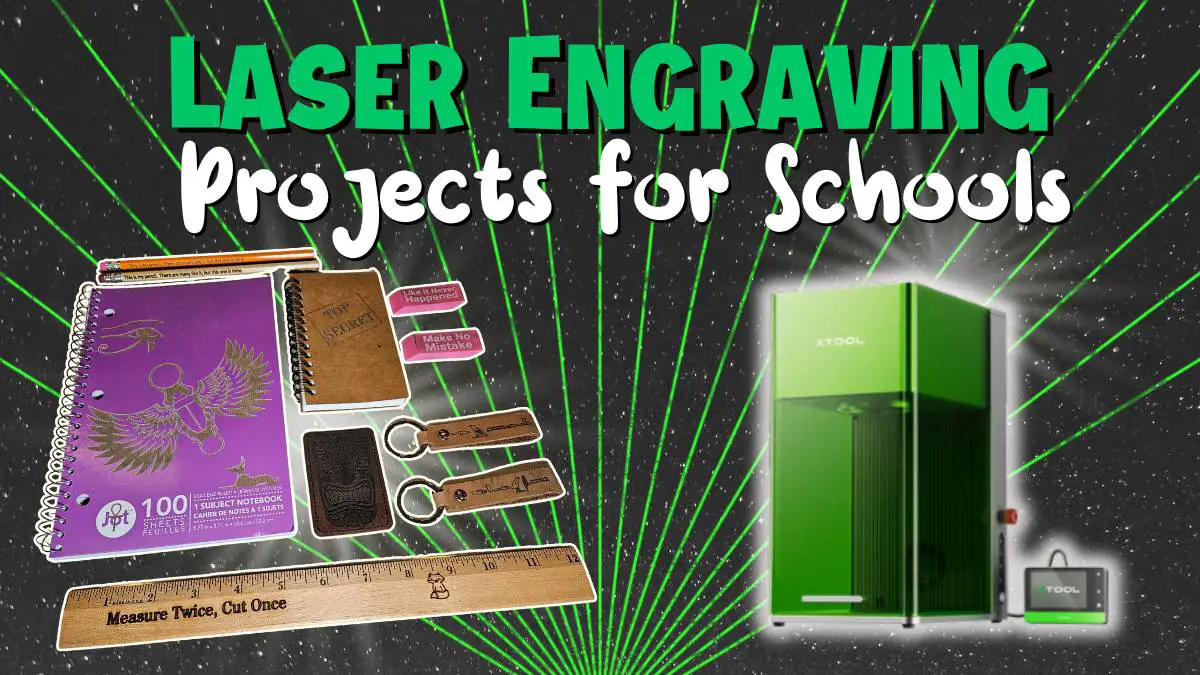STEM projects are not commonly associated with apparel. These are unique ways to approach STEM, and the students take great pleasure in designing something they can wear. It allows the participants the opportunity to express their individuality while learning something about STEM.
STEM projects you can wear include recycled jewelry and clothes. Science principles can be used in designing clothing, jewelry, or headbands that light up. Safety clothing can also be addressed in STEM activities. Designing clothing that has more than one use makes a great STEM (and STEAM) Challenge.
Think of wearables like a smart watch, fitness tracker, sleep tracker ring, etc. These are all pieces of technology we can wear that we now find commonplace. You don’t need to start with designing the next Fitbit or Apple Watch; though you can apply some creativity, critical thinking, and design skills and craft something awesome.
It is an excellent and exciting challenge for kids and students to complete a STEM project that they can wear. Many parents find these activities exciting and will become involved in helping their children. Some children may discover they have a knack for design find their occupations through the completion of one of these activities. Let’s explore
Light-Up Cap

Here is a cool LED knit cap using Raspberry Pi (follow the link for details on the build and circuit design.)
A LED-lit cap can be used in numerous ways. It can be used in conditions where high visibility is essential for safety. On this note, LED lights can also be fitted to jackets, safety vests, or sashes using the same techniques. These can be used at road accident scenes, while cycling, or when camping or hiking to name just a few scenarios.
To take this one step further, how about installing a full LED display into a hat? Grab some attention with some bright designs and animations or display an individual brand or signature.
Here is a video that details creating a hat with a flexible LED screen:
Motion Activated Clothing Or Jewelry
Motion-activated clothing or jewelry uses skills such as electrical wiring, combined with the technical design of clothes and jewelry. There are some exciting items that can be made using motion to activate lighting in clothes.
Here are a few ideas to spark your imagination:
- Sound or vibration activated choker necklace which lights up when the individual speaks. You can find some basic principles on completing this project at the Instructables
- LED-lit shoes are popular in many countries and areas, and here is an opportunity to customize your own. For some technical help, watch the NematicsLab video. The Instructables LED Shoes page will shine further light on the issue.
- Light-emitting disco ball earrings will make an unusual and interesting project for an enterprising student.
- Motion-activated light-emitting head or hairband.
Wind Chime Earrings
Earrings lend themselves to the charm of wind chimes. Young designers can learn about acoustics and harmonies while crafting these earrings.
You can check out a demonstration of how these are created and get a sense of the look, sound, and design elements:
3-D Glasses
3-D glasses are cheap to buy, but they make a fascinating STEM project. Using red and cyan lenses, you can create your own glasses to watch 3-D movies. Label website shows how to do this project.
Belts
Making a multi-use MacGyver style belt is a STEM project that may appeal to adventure-loving students. For this project, the goal is to design a belt with hidden pockets and tools but still fulfill the function of a belt.
Students can choose any material they want. You can specify how many other functions the belt must perform or how many tools it conceals in its design to vary the difficulty level of the challenge.
Here’s a quick example showing a unique “tool belt”:
Recycled Jewelry
Recycling materials to make jewelry is a challenge most kids can enjoy. The options are endless and can include a wide variety of styles and options.
Make A Toothbrush Bangle
- Use a discarded toothbrush and remove the bristles using small pliers or tweezers.
- Place the toothbrush in boiling water for five to ten minutes.
- Use tongs or pliers to bend the toothbrush around a circular object such as a cup or rolling pin, or coil it inside of an empty can.
- Leave it to cool completely.
- Decorations such as ribbons, leather strips, glitter, or charms can be added to the bracelet.
The heat makes the plastic pliable. By deforming it when it’s in a malleable state, it holds its “new” shape as it cools.
Make A Button Necklace
- Collect buttons from discarded or broken clothing.
- String these onto fishing line or jewelry twine.
- You can create a necklace long enough to fit over the head or use a jewelry clasp for fastening the necklace.
Some Other Ideas
- Combine broken jewelry items to form a new piece of jewelry.
- Use tabs from soda cans for necklaces or earrings.
- Many items are packaged in long thin tubes. Cut these into sections to create beads for making jewelry.
Related Post: Check out or post on experiments for kids with recycled materials
Recycled Clothing
The clothing and textile industry accounts for ten percent of all carbon dioxide emissions worldwide. The textile clothing industry is the second-largest global user of water. These factors significantly impact the environment and are a motivating factor in considering alternative options for creating clothing.
Reusing materials by recycling them into wearable items requires creative thinking and problem solving skills. Applying these skills to clothing design can be an innovative approach to fashion.
How To Make A Crisp or Chip Packet Skirt
- Use an old skirt that can be holey or has lost its color.
- Collect empty chip or crisp packets and clean them out using warm water and liquid detergent. Make sure to clean out all of the food debris; you do not want to smell like `salt and vinegar’ or ‘barbecue’ flavoring.
- Once the packets are dry, arrange them in the pattern and coloring that you prefer.
- Use fabric glue to attach them onto the skirt or sew them on with a sharp needle and thin thread.
Some Other Ideas For Recycled Clothing
Combining design, recycling with a little bit of fashion sense can make a great STEAM project. What cool things can you design?
- Use plastic or metal spoons and cut off the handles. The scoop part of the spoon can be used as decoration on clothing.
- Several old clothing items can be combined to create something new.
- Old clothes can be torn into rags to create a chic alternative dress or skirt with a jagged hemline.
- Plastic soda or pop bottles can be cut open and joined together to form a hoop petticoat to wear under a skirt or dress.
Wrap Up – STEM Projects You Can Wear
STEM projects that can be worn trigger students’ imaginations and fire up their enthusiasm. It’s another way to introduce STEM concepts to kids who may not have the interest or initiative otherwise.
While the aim is to have fun and design something unique and cool, some of them may even become unique designs that can be commercialized. Even if you don’t design the next big wearable, having fun while learning is a big win.




